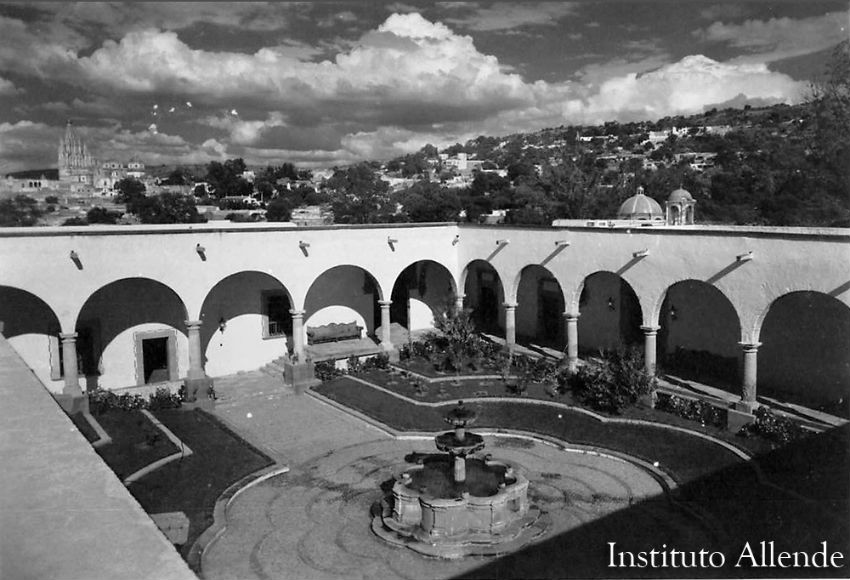
Audax Minor II
I first came to San Miguel 26 years ago. It was a different place then.
I was living in a two bedroom cottage with a woman who had spent all her life in a big, high-energy city. She wasn't really comfortable unless there were at least another eight million or so people in the vicinity.
We were living on a street in Colonia San Antonio that this year has had two high-six-figure house sales. Back then, we could have bought our rented place for $35,000. But as I said, it was a different town then. For instance, there was a bull that used to graze in front of our house. And though we became rather fond of him, I was always careful not to wear anything red.
The woman was a good sport though; she stuck it out for five months. But in the end, even as fascinating as I am, I couldn't hold her in San Miguel.
There was very little contact with the "outside world" back then. There was no telephone service to speak of. We had no television. There was no cable. And Al Gore hadn't invented the internet yet.
She felt isolated. I couldn't really blame her. Mexico City would have been much more to her taste, but we were here in San Miguel ...with a bull.
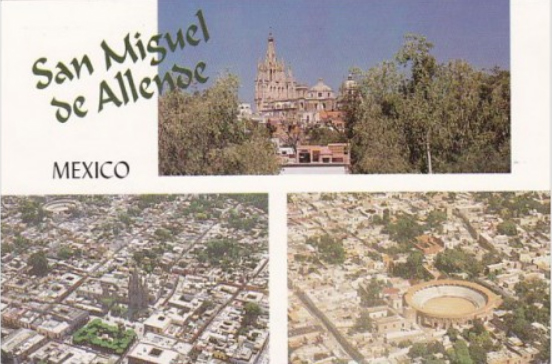
Don't worry, this is not going to be one of those nostalgic, wasn't-San-Miguel-great-back-then pieces.
People complain about globalism, about how the essence of San Miguel has been corrupted by modernity, how Starbucks is a disaster, and how soon there will be a Taco Bell on the Jardin ... okay, I get it. It was simple and charming and almost innocent then.
But I have to ask: aren't you grateful for the internet being available now? If it had been available in 1992, I might have kept that woman here. And my life would have been totally different.
All of which is to say that paying my Megacable bill each month is a joy for me. It's like those people who believe in God. They go to church on Sundays and give money during the offertory; they are giving thanks.
In the same way, I make my donation to Megacable and give thanks for the existence of cable TV. And for the internet.
Because of cable, come the first Saturday in May, we will be able to see the Kentucky Derby. And that, for me, is the equivalent of a miracle.
So let's start right there, at Megacable. I'll give you an exercise that will help you understand the nature of the race and identify the winner:
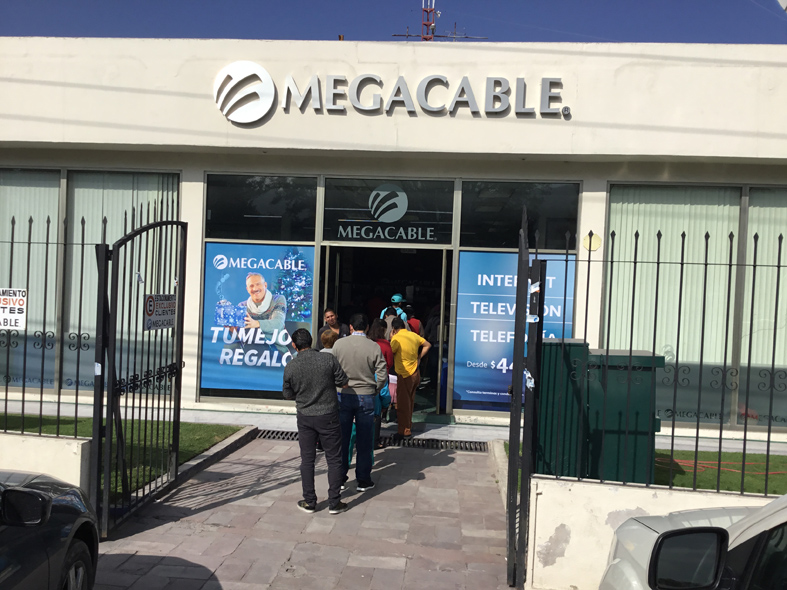
You've paid your cable bill. Now leave through the door and go left down the Ancha toward town. Begin at a sharp pace. If there are people walking in the same direction, pass them. Around Luna de Queso, settle into a still-brisk, but steady and sustainable pace as you continue. Pass Hotel Real de Minas, pass the Instituto and then, bearing right, go up Codo where the Ancha splits at the triangle corner with that Italian restaurant.
You're going uphill at this point, but keep your steady pace as you turn right onto Hernandez Macias, which you'll stay on all the way to Canal. But when you pass the strange place on the left with the rows of tin soldiers in the window, I want you to dig deep and really start turning up the dial on your pace.
At Canal, turn right and keep pushing yourself even though you're going steeply uphill now. Don't let up until you get to the finish – Starbucks. You should be breathing very hard by the time you get there.
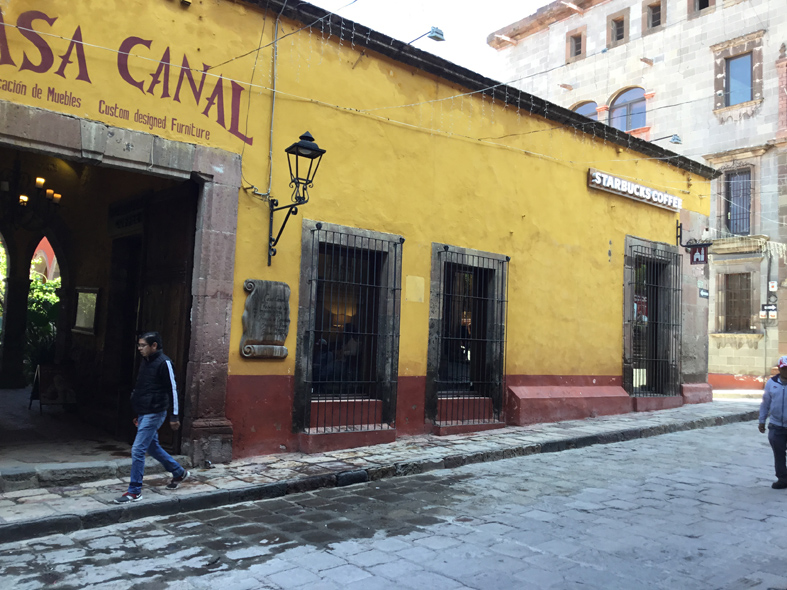
With all this you will have just traveled the same distance as the Kentucky Derby – a mile and a quarter.
Megacable to Starbucks probably took you something over twenty minutes to complete. The winning horse in the Derby will cover the same distance in two minutes ... more or less. I say "more or less," but it will probably be a few seconds "more." Only one horse in the 144-year history of the race has done it in under two minutes – Secretariat in 1973.
The Kentucky Derby is about breeding, speed, training, class, courage, pace, luck, racing luck (which is different) and a thousand other things, but more than anything, the Kentucky Derby is about its distance – a mile and a quarter.
No horse in North America runs an official mile-and-a-quarter race until the first Saturday in May of his three-year-old year. Thoroughbreds are allowed to start racing at two and depending on when during the year they begin, they will start out running anywhere from four furlongs (a furlong is an eighth of a mile) to five and a half or six furlongs. During the course of the year they will stretch out to longer and longer races until, by November, they will reach their 2-year-old maximum of a mile and a sixteenth.
The task of picking who will win the Derby consists of figuring out which horse will best be able to go a mile and a quarter on the first Saturday in May. In handicapping any race, of course, there is a great deal of calculated guesswork involved, but in the Derby the difficulty is compounded in that none of these horses have ever run that far before.

The good news is that as it gets closer to May you'll get lots of clues as to how horses will fare at the Derby distance. The bad news is you'll probably get too many clues. From January through April, there are about three dozen quality races for three-year-olds run at more than a dozen tracks around the country. These races have traditionally been used as stepping stones to prep the contenders for the big race. The races range from six furlongs up to a mile and an eighth, with the longer distances being the immediate lead-ups to the Derby.
After following racing for years, I have come in possession of a piece of knowledge which, in the spirit of "giving something back," I am willing to pass on to you here: There are horses that are absolutely unbeatable at six furlongs and might even be able to stretch it out to a mile, but would need a conveniently located taxi stand at the head of the stretch to make it to the finish line in the Derby. It has cost me a certain amount of money to learn this lesson, but I give you this knowledge gratis.
This will free you to solve the only two remaining mysteries in life: Which horse will actually master the mile and a quarter and win next year's Kentucky Derby? And what is that place on Hernandez Macias with the tin soldiers in the window?
**************
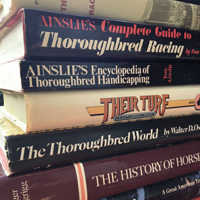 Audax Minor II is the pen name of a writer who divides each year between here in San Miguel, and a small town (pop. 400) in southern Ontario, Canada. Now retired, he travels to racetracks all over the world (four continents so far, hoping to add a fifth this year). He grew up in the Midwest of the United States and made his living as a writer for 35 years.
Audax Minor II is the pen name of a writer who divides each year between here in San Miguel, and a small town (pop. 400) in southern Ontario, Canada. Now retired, he travels to racetracks all over the world (four continents so far, hoping to add a fifth this year). He grew up in the Midwest of the United States and made his living as a writer for 35 years.
You must register and log in to write a comment.
Please use the "login" link at the top (right) of the page.
|